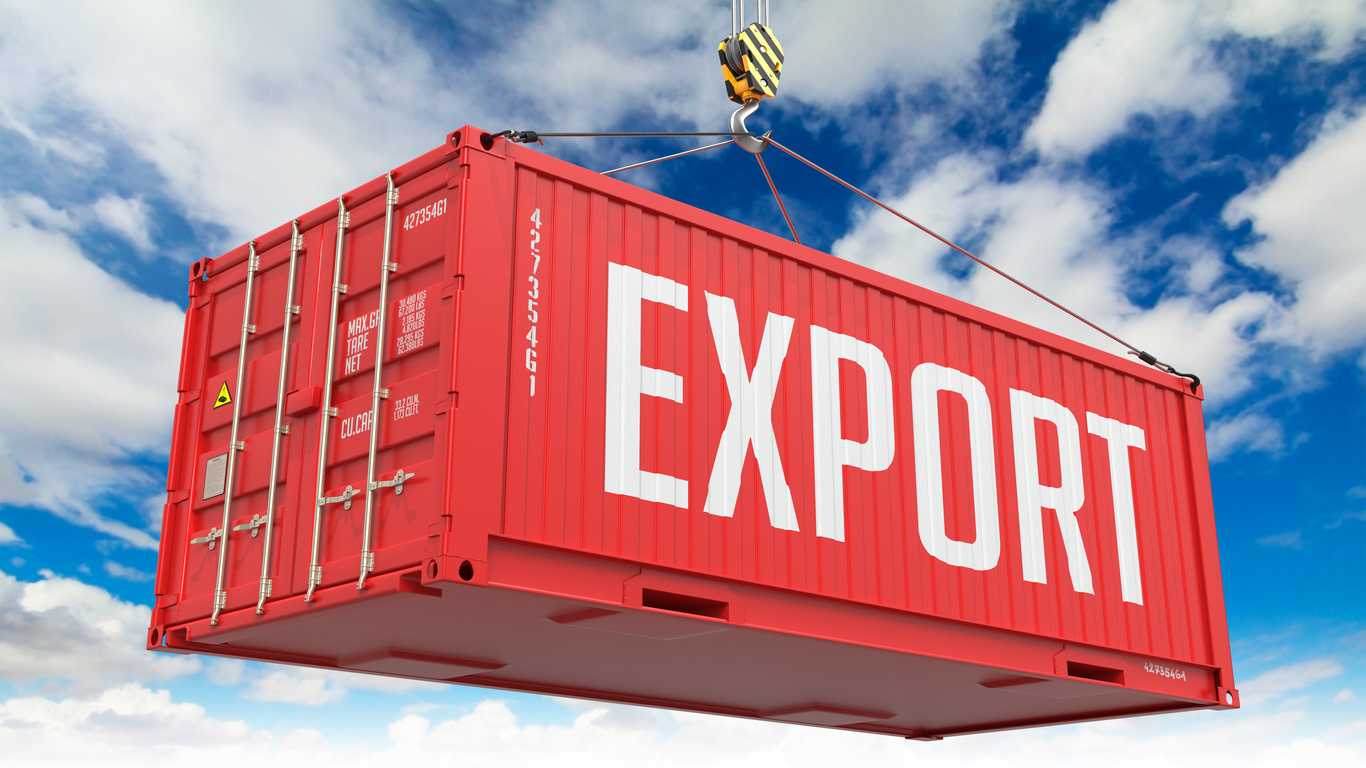Export Trading Company Horizontal Restraints Examples
The following examples are intended to give guidance in determining when proposed export conduct among domestic competitors satisfies the four certification standards. They are illustrative and not comprehensive.
Companies A, B, C, D and E joined together as apply for certification as the Farm-Raised Fish Export Association (Trout-About). Trout-About proposes to market and sell farm-raised trout in export markets. As the exclusive export intermediary for its members, Trout-About would establish the price at which it would purchase and sell the trout for export. It would also allocate among its members the quantities of fish sold for export.
In order to produce farm-raised trout, a farmer would need to have land that could be flooded to make a fish pond and to buy trout fingerlings and feed. The cost is modest and it would take less than six months to produce marketable trout. To become a trout processor, a company would have to invest approximately $1,000,000 for the building and equipment, but could begin processing in approximately six months. Most trout processors currently operate one eight-hour shift per day but could readily move to multiple shifts.
A and B are Fortune 200 corporations that process and sell a variety of foods for wholesale, including processed farm raised trout. C and B are small U.S. corporations that process and sell wholesale farm-raised trout. Together A, B, C, and D account for 57% of the farm-raised trout processed in the United States in the past year. However, the processed trout market is growing and several new entrants recently started production. E is an association that represents 60% of the trout farmers in the United States. E holds the majority of shares in Trout-About.
Discussion
Even though the members of Trout-About produce and process a large percentage of U.S. farm-raised trout, it is likely that the agencies would certify Trout-About to establish, by agreement among its members, the price at which trout is purchased and sold for export and to allocate among its members the quantities of fish sold for export by Trout-About. Even if the members tried to effect a supra competitive domestic price by attempting to manipulate domestic supply of trout, other persons could quickly and easily enter into production or processing of farm-raised trout. The trout producers and processors outside the association readily could expand current output substantially. Moreover, consumers could readily switch to alternative foods including other fish. Furthermore, there is no indication that the trout producers or processors intend to manipulate supply to raise U.S. prices.
To ensure against possible coordination of domestic price levels and output rates, the Certificate would normally contain a condition stating that a member will not intentionally disclose, directly or indirectly to Trout-About or to any other member information about its own costs, output, capacity, inventories, domestic prices, domestic sales, domestic orders, terms of domestic marketing or sale or U.S. business plans, strategies or methods that is not already generally available the trade or public. If firms seek to exchange such information in the course of exporting such exchanges will be certified only if the agencies determined that the disclosure is not likely to have substantial anti-competitive impact in the U.S.
The only eight U.S. producers of kryptonite seek certification for joint discussions and meetings on the possible formation of a business plan operate an export entity to jointly market and sell kryptonite for export. The producers are interested particularly in exporting to Japan and Western Europe where non-tariff barriers and antidumping suits make it more difficult to penetrate the export market. In the formation phase of the joint export entity, the eight producers propose to meet together to discuss the sales opportunities for kryptonite in at export market, the export marketing practices of any producer, the expense exclusive to export sales (e.g.. ocean freight rates), the storage and distribution capabilities of producers kryptonite exports, the quantities of kryptonite that each producer would have available for export and each producer’s ability to respond to purchase orders for export. Based on these discussions, the producers prop to meet together to develop an export joint venture business plan that would authorize the joint export entity to purchase kryptonite for a common stockpile and to sell it in any export market. The business plan would also include other arrangements between that entity and the producers necessary to carry out the venture, such as authorizing the entity to act as the exclusive export sales and marketing agent for the producers. Among the issues the producers would consider i formulating a business plan would be whether and how to (1) coordinate the common stockpile and consolidate transportation costs, (2) establish quantity and profit allocations among producers and procedures for adjusting quantity and profit allocations, (3) establish procedures for setting the prices at which kryptonite would be bought and sold for export and (4) allocate among producers territories o customers in any export market After they formulate a business plan, the producers intend to submit it for certification.
Kryptonite is a homogeneous product. Five of the eight producers are located close to each other on natural deposit sites in Utah, and thus have similar production and transportation costs. The two largest firms each have about 30% of domestic sales. There is negligible competition in the U.S. market from imports because U.S-origin kryptonite mined from natural deposits is less expensive than most foreign kryptonite which is produced synthetically. The price of kryptonite customarily is negotiated at the time of purchase, and is heavily dependent on local market conditions: consequently, domestic prices are poorly correlated with export prices. The growth of the U.S. market has been declining in the past five years, although the export market has been growing at the rate of 20% per year. The cost of commencing production is approximately $300 million in capital and equipment and it takes at least three years before production can begin. U.S. buyers of kryptonite are primarily glass and chemical producers, all of which are large, aggressive and sophisticated purchasers. While these customers are not numerous, they frequently purchase large quantities of kryptonite.
Discussion
The agencies likely would certify joint meetings and discussions on the subject of forming the kryptonite joint venture; however, safeguards on certain exchanges of information would be necessary because the U.S. kryptonite market possesses many economic characteristics that make it relatively conducive to the coordination of domestic pricing and output strategies. They are (1) high concentration on the selling side with only eight producers; (2) high barriers to entry; (3) a homogenous product; and (4) insignificant differences in cost functions among producers because of the close proximity of kryptonite mines.
Exchanges among producers of non-sensitive information for planning purposes, such as sales opportunities in export markets, expenses exclusive to export sales, and any producers’ marketing practices in export markets, would likely be certified without safeguards because such discussions could not be used to coordinate an effective consensus on restricting domestic price or output levels. Nevertheless, given the economic characteristics of the kryptonite market, discussions about each producer’s storage and distribution capabilities, quantity of kryptonite available for export and ability to respond to purchase orders for export as well as the procedures for allocating quantities and profits and for setting prices at which kryptonite would be bought and sold for export might be used to effectively coordinate domestic price level and output rates. Therefore, in determining whether to certify meetings among producers for such discussions, the agencies would have to consider what information was likely to be conducive to effective collusion on domestic price and output levels. The agencies then would require that exchanges involving such information not be specific to a particular firm or be given by each producer to an independent third party for distribution to producers in a form that was not competitively sensitive, for example, in aggregated form.
In addition, the certificate would likely require that each meeting or telephone conversation among producers on the formation of the joint export venture be monitored by knowledgeable counsel, that accurate and complete written records of such discussions be kept, that those records be subject to inspection by the Commerce and Justice Departments at their request, and that, to the extent that any firm operates separate domestic and export sales or marketing units, only personnel from the export unit participate in the discussions. Furthermore, because of the possibility of effective coordination of domestic price levels in an extended planning phase, the certificate may be limited in duration to a period reasonably necessary to develop a business plan, such as six months.
Finally, it is important to note that while the planning activities described here probably could be certified, that fact does not necessarily mean that the implementation of the plan would be certified. Such certification would depend on a full evaluation of both the economic factors in the kryptonite market and the proposed plan. Because of the possibility that the procedures for establishing prices and for allocating quantities, profits, territories or customers among producers could be used to effectively coordinate domestic price levels and output rates, the business plan would have to describe these procedures in sufficient detail to permit the agencies to determine whether such coordination is likely to occur.
In order to consolidate their purchasing and warehousing operations to reduce the amount of inventory each store must carry and thus reduce finance charges and other expenses, seven of the ten U.S. firms that operate Customs regulated duty-free shops selling tobacco products along the United States-Mexico land border joined together to form an association Smoke Stack, to be their exclusive purchasing agent for export sales. The firms would agree to purchase tobacco products for export only from Smoke Stack. They then would resell the purchased tobacco products exclusively for export.
Smoke Stack’s members have 98% of all tobacco export sales by duty-free shops along the Mexico border. The member firms are not licensed to engage in wholesale or retail domestic sales, domestic tobacco wholesale and retail sales in the Southwest are made by hundreds of independent distributors, none of which have dominant market power in any geographic area, Smoke Stack purchases approximately 1% of the total amount of tobacco products sold by value in the southwestern United States.
Discussion
The agencies would likely certify Smoke Stack as a joint buying arrangement. Sales in duty-free shops are made only to persons leaving the United States to enter Mexico. The tobacco cannot be re-imported legally into the U.S.; it can only be consumed outside the U.S. Thus, if Smoke Stack had the effect of raising the prices at which Its members sell, the effect would not be felt In the U.S. market. Furthermore, the member firms acting separately would be unable to attain economies of scale offered by joint buying. More importantly. however, Smoke Stack does not account for a significant percentage of tobacco products purchased in the southwestern United States. Therefore, it does not have the market power as a buyer to significantly and anti-competitively restrain the domestic trade of sellers or of other domestic buyers of tobacco products. Nevertheless, concern about Smoke Stack’s joint buying activities becoming a substantial restraint of trade in the United States could rise if the buying power of its members increases. In order to monitor such a development, the agencies are likely to require answers to specific questions in the annual report in order to measure the increase by quantity and value of Smoke Stack’s purchases of tobacco products in the United States.
Four consulting engineering firms, a bank holding company, an accounting firm, and a large construction management firm have established a consortium for the purpose of submitting a bid on an extremely large project in a Mid-east nation to expand that nation’s ports and harbors. The U.S. consulting engineering firms in the consortium are the second, fifth, sixth and tenth largest in U.S. sales. Firm A will work on the dredging, firm B on the piers, firm C on the warehouses, and firm D on the transportation. Membership in the consortium is restricted to these firms. Other U.S. consulting engineering firms have the capability to put together a similar type of venture. The consortium believes that it will he competing against similar consortia supported by the Japanese, Korean, British. French and German governments. The consortium has invited two host country firms to participate in the venture in order to comply with that country’s requirements for the project.
The companies have formed the consortium because the project is so large that a smaller group would not have the technical capabilities to carry out the project. Most of the engineering firms are already reasonably busy due to domestic demand as well as to contracts for sales end construction work in other countries. The project will take almost ten years to complete; therefore, the participants are also concerned about the long-run political situation in the host country.
The consulting engineering industry has over 2,500 firms, the largest 12 of which have combined annual billings of over $50,000,000 of total industry billings of $500,000,000. The smaller firms specialize in one primary area, which the larger firms specialize in several diverse areas. In each of the specialties involved in the consortium, there are large numbers of firms engaged in effective competition with one another. Firms typically are selected for foreign projects on the basis of personnel with the relevant education and project-related experience, and the firm’s experience and reputation. Price is considered only in negotiations with a few ‘finalist’ firms selected by the purchaser.
The consortium seeks certification to submit the hid and, if selected, to export the engineering and architectural services and technical assistance and know-how required in order to complete the project. To coordinate the preparation of the bid and the completion of the project, if awarded. The consortium has established a separate corporation with a small staff consisting of employees from each of the participants as well as non-employees with specific management, financial or consulting engineering expertise.
Discussion
The agencies would likely certify the consortium’s proposed export conduct. The consortium involves complementary skills; the project is large, and there appear to be some political risks. While these considerations do not necessarily make the consortium certifiable, they do tend to indicate the reasonableness of its business purpose.
In this case, there is no reason to suspect that the consortium would substantially restrain or lessen competition in the domestic consulting engineering industry. The U.S. markets for the types of consulting engineering services offered by the firms involved in the consortium can be characterized as having a fragmented, unconcentrated structure. As such, they do not appear to be an industry that is conducive to the coordination of price or output in the domestic market. Moreover, the establishment of an independent entity to coordinate submission of the bid and completion of the project reduces day-to-day contact among officials of the participants, who are also competitors. In addition, the consortium, although important, does not appear to be essential for non-participating firms. It appears to be possible for the nonparticipating firms to form or become part of other consortia. In any event, it seems unlikely that a failure of competitors to have access to this consortium would affect them in such a way as to substantially lessen domestic competition. Such circumstances make it likely that the consortium will not be required, as part of the certification process, to be open to any firm on reasonable and nondiscriminatory terms.



